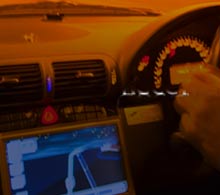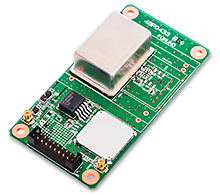Articles for ITS market Expectation vs. reality:Autonomous Driving in Japan
Is the trend of autonomous driving over?
It is said that there is not much news about autonomous driving nowadays, and some people wonder if the self-driving enthusiasm is over.
In 2017, the experiment of “Google car” became a popular topic. However, in 2018 there were several fatal accidents related to autonomous driving. Due to these accidents, the safety had been questioned worldwide and major countries have changed their policy on autonomous driving.
On the other hand, in Japan, experiments for autonomous driving are actively being conducted, because the government has eased its regulation. An expert explains that Japan is the most comfortable environment for autonomous driving experiments worldwide.
It can be said there has been no big news recently as the first experimental stage is over and discussions are being held for practical use. However, Japanese autonomous driving is now at its turning point. We can see problems by comparing its situation in China.
 Image recognition technology of Baidu Apollo
Image recognition technology of Baidu Apollo
 Hyundai Korea's self-driving car in collaboration with the Baidu Apollo
Hyundai Korea's self-driving car in collaboration with the Baidu Apollo
The concept of autonomous driving in China
On September 15, Chinese IT giant Baidu explained the progress of the automatic operation plan "Apollo" at the annual meeting. They introduced the self-driving taxi of China FAW and the remote control capabilities in China. As a technical foundation, they utilize a high-precision 3D map and Chinese GNSS BeiDou for location information. Communication methods include 5G and the cloud, like V2I, V2V, and V2P with laser radar (ex: LiDar) and cameras for image recognition are also used. Looking at these capabilities, it seems that there is not a big difference from Japanese technology.
The difference is the role of autonomous driving in society.
Baidu aims to commercialize Level 3 and above autonomous driving by around 2025 in major cities. It is believed that this system would increase the efficiency of social mobility, facilitate economic activity, and maintain stable economic growth.
It is not just a business plan by one company, but a comprehensive city plan by the government.
In general terms, it can be said that China, where the government has power, is suitable for the practical application of autonomous driving. In order to improve the movement efficiency, national-scale traffic management will be required. Specifically, it needs to establish a dedicated road for autonomous driving or to install a speed limiter on Level-2 or lower vehicles for maintain a speed difference between different level vehicles.
Japanese dilemma
However, in Japan, it is difficult to impose restrictions on the public for autonomous driving. Automakers explain that it is essential to comply with the legal speed at level 3, but there is almost no discussion about installing a speed limiter on lower capability vehicles.
This is the same in other major countries such as Germany.
Daimler announced that they would implement Level 3 driving at 60km/h or less on the highway in the second half of 2021. The new Subaru "Levorg" is equipped with the next-generation EyeSight, which enables hands-off driving at 55km/h or less on the highway. In addition, last summer Honda had initially stated that they would put Level 3 to practical use, but in April 2020, it was announced they would revise the schedule.
The most important thing for practical use of autonomous driving is the social demand. Even if technology evolves, it will not be accepted unless people think they really need it.
To what extent will Japan pursue the "ideal" of autonomous driving? I would like to keep an eye on the future movement of the Japanese government.
Writer introduction

Mr. Kenji Momota Automotive journalist
His major is the world automotive industry and he is also familiar with the energy industry, IT and the aging society problem as the related fields. He acts around the world based in Japan and USA and writes for the general magazines, the technology journals and the automotive related media etc.
He is also commentator of motor race and world's motor show on TV program based on his career of the driver of Indy Racing League and NASCAR. In recent years, he has been covering about a paradigm shift from developed countries to developing countries, the motorized vehicle like EV and the telematics.
FURUNO ITS Journal
Click here for the latest articles after 2022 (in Japanese)2022
- The "realistic" self-driving roadmap shown by the Japanese government and a hands-on report on the latest Subaru EyeSight X
- Will FCVs (Fuel Cell Vehicles) Become Popular? ~New Movement in Toyota and Honda~
- The 'Complete' online sales of new cars start in Japan. Will this new way of buying cars take root?
- Many Firsts! On-Site Report from Tokyo Auto Salon 2022 - The author, who knows what goes on behind the scenes, looks back on 40 years of history. -
2021
- "Moving toward zero traffic fatalities for four-wheeled and two-wheeled vehicles globally in 2050" ~Experience on Honda's latest safety technologies~
- Tsuneishi Shipbuilding's building and DX, an exclusive visit to the main factory
- Japan's Smart City: New Moves toward Practical Use
- When will self-driving buses (service cars) be put to "full-scale" practical use?
- Utilization vehicle data during disasters
- Toyota-led Connected Technology to Transform Commercial Vehicle Business -From light trucks to large trucks and buses-
- Toyota enters the connected car "Personalization" business
- Japanese automakers' carbon-neutral strategies swept up in ESG investment
- Drive experience of the latest autonomous vehicle models and advanced driving support systems
- Will carbon neutrality accelerate the trend to strengthen LCA (Life Cycle Assessment)?
- Semiconductor shortage exposes realities of the automotive industry
- Online Autonomous Driving Contest Enhancing development of Human Resources
2020
- What happens to CASE when gas cars are banned in Japan?
- When will Flying Cars be launched?
- Expectation vs. reality:Autonomous Driving in Japan
- V2X, Becoming increasingly important in autonomous driving
- Technology of Subaru “EyeSight X”
- Lifestyle-oriented French cars gain popularity in Japan
- Human-oriented smart cities are wanted
- MaaS and CASE, how would automotive industry change after COVID-19?
- The beginning of virtualization era, triggered by COVID-19
- Trend of EV shift and consumer demands
- TOYOTA Press conference about ADAS - Releasing algorithm for "sudden acceleration suppression during attempted sudden acceleration" free of charge -
- The Japanese automotive industry in 2020 - 3 turning points -
- "Using a smartphone while driving" and "Level 3 automated driving"
2019
- Motor show business model is at a turning point - Tokyo Motor Show Report -
- Commercialization and monetization of MaaS - ITS World Congress Singapore Report -
- Android Automotive pays attention to V2X - Report from the Frankfurt Motor Show 2019 in Germany -
- Automobile Distribution Revolution and DCM (Data Communication Module)
- Connected business potential and newly proposed "eMaaS" by Honda
- 5G services for practical use are multiplying
- Connectivity technologies attracting attention due to frequent traffic accidents
- Shanghai Motor Show report -SUV, EV, Automated car & 5G-
- Drone Business roadmap and updates to Michibiki (Quasi-Zenith Satellite System)
- MaaS (Mobility as a Service) "town development." Full-scale promotion for a national project
- CES organizer states "Data Period in 2020s." Transformation of the Automotive Industry in CES, US "-CES2019 Report-"
- "Return to Origin" directed towards the age of change, automatic operation and connectivity
2018
- New proposal for Private Car Automated Driving Level and other Hot 5G Technology Topics
- Standardized EV charging infrastructure concerns in Europe, US, Japan and China - Kobe EVS 31 field report -
- Touring a pure car carrier and a test drive of the latest hybrid car
- Planning stage products are exhibited at the newly established visualized mobility service "TOYOTA MOBILITY SHOWROOM".
- Potential “Community Car-share” program promoted by local residents
- CES Asia Report 2108
- Companies attempt new Vehicle-to-Infrastructure communications, including traffic volume measurements and vehicle positioning. -ITS Asia Pacific Forum in Fukuoka-
- Geneva show in Switzerland. Flying cars and MaaS (Mobility as a Service) were hot topics.
- EV (Electric Vehicle) proposals by country
- MaaS competition through service mobilization, M & A and technical field collaboration is accelerating. - The CES 2018 Report -
2017
- Big data’s initiative and fight for the automotive industry. Cooperation among companies becomes increasingly important.
- Connected car and road-to-vehicle communication automatic operation
- ETC (Electronic Toll Collection) and ETC2.0. Current situation and projected future
- Rapid development of sharing economy
- Germany is first to recognize level 3 automated driving
- ITS EU 2017 Field Reports -Automatic Operation and the eCall-
- From Infotainment to ITS, the competitive area is spreading in the car big data industry.
- GTC (GPU Technology Conference) Report and the de facto standardization of AI (artificial intelligence)
- Renesas' new challenge! "e-AI Solution" and "Renesas Autonomy"
- The Automobile industry is shifting from a manufacturing industry to a service industry.
- The movement toward accident countermeasures for aging drivers in Japan
- Fusion of ride sharing and fully automated driving is advancing in the USA.
2016
- Overview of the Quasi-Zenith Satellite System (QZSS) and advancements toward full-scale practical use including the Tokyo Olympic Games - G-space EXPO 2016 report-
- Japan’s automated driving project "SIP-adus" will be a large demonstration experiment.
- The International Home Care & Rehabilitation Exhibition. There were many car manufactures with exhibits booths at this show.
- Japanese car manufacturers starting to concentrate on strengthening the ADAS system
- A new movement of legislation for autonomous cars
- Cyber Security and “AGL”, the new OS for automotive are hot topics in the connected car industry
- “High precision 3D map” the key future of autonomous car and pedestrian dead reckoning
- Chinese “BAT” is accelerating their business in the EV (Electric Vehicle) market
- Tesla's original connection to Taiwan and the new transportation system technologies.
- "The main topic" of the Geneva Motor Show was how to strengthen "pedestrian protection"
- The probe data business is getting more competitive
- Reporting directly from the 2016 CES show "Data services will soon become the main revenue source of automotive industry"
2015
- Do the automated driving systems need the GNSS (Global Navigation Satellite System) ?
- ETC Version 2.0 is coming soon. A new service was announced at the Tokyo Motor Show and the possibility that is could be used as a device for older drivers.
- "Connected Horizon" and "eHorizon". Germany's leading parts supplier accelerates strengthening of "Big Data" for business



 The highway in Beijing
The highway in Beijing  GPS/GNSS Receiver&Chips and Modules (positioning and timing)
GPS/GNSS Receiver&Chips and Modules (positioning and timing)